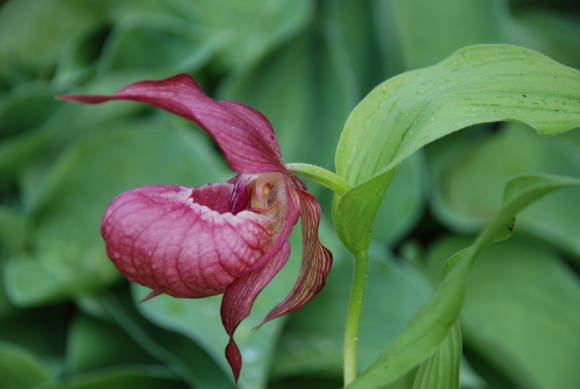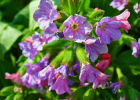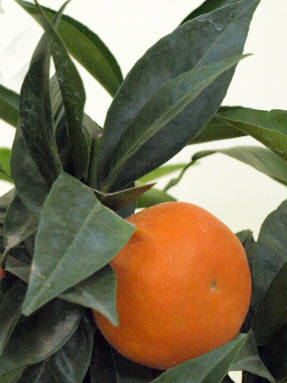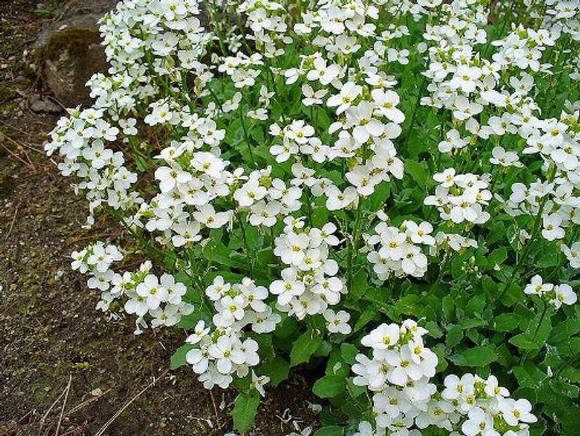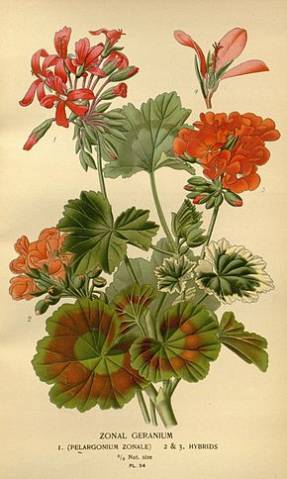
Who does not recognize this tall grass, which stands out among its other fellows with a grayish-silvery shade and a strongly pronounced specific smell? Wormwood is known to everyone!
Since ancient times, this herb has been used in folk medicine in many countries of the world due to a powerful set of useful and medicinal components in its composition. It is not surprising that in translation from Greek its name - artemisia - translates as "bestowing health." Its curative effect is recognized by modern traditional medicine and cosmetology.
And in Russia, in the old days, wormwood not only got rid of numerous ailments, but also added it to mead to slow down the intoxication. And the hangover syndrome was removed with a decoction of wormwood. And today our herbalists use this plant in the therapy of getting rid of alcoholism.
Our ancestors believed that wormwood not only has a beneficial effect on health, but also brings good luck in serious business, travel and love affairs. In those ancient times, a fragrant bunch of wormwood-grass hung over the door of every house to protect the home from thieves and ill-wishers.
Wormwood in different parts of our planet has also been assigned magical properties, as evidenced by one of the famous names of this plant - witch's herb. Magicians, soothsayers and sorcerers from different countries still use wormwood in their rituals, consecrate magic mirrors, crystal balls and other Vedic instruments with its help.
Among the many advantages of wormwood, there is one more, which is simply impossible to overestimate - its contribution to the development of winemaking on Earth. After all, it is thanks to the medicinal extract of wormwood that mankind has received vermouth.
Vermouth is a fortified wine flavored with wormwood and other herbs and spices. The first types of vermouth in ancient times were prepared on the basis of exactly wormwood. And the international name of this very popular drink comes from the German word "wermut", literally meaning "wormwood".
Vermouth history
Scientists believe that the very first vermouth was created in the 5th century BC. by Hippocrates himself. The great doctor was looking for a drug that helps to solve stomach problems and save from intestinal parasites. He obtained this medicine by combining white wine and wormwood extract.
The Hippocratic recipe very quickly began to be used by the ancient Romans. They supplemented the composition of the medicinal alcohol elixir by introducing rosemary, celery, myrtle and thyme into it.
Vermouth production reached its first peak in the Middle Ages, when numerous monasteries became its centers. Although medieval wormwood wine was used mainly for health improvement.
And only in the Renaissance in Piedmont, where the art of making flavored drinks from white wine with herbs reached its peak, vermouth became a drink not only for the body, but also for the soul. The Venetians were able to make its taste more exquisite, because they added extracts of exotic plants brought from other continents to it.
Vermouth became really popular with the opening of the first fortified liquor distillery in Turin in the 18th century. From a pharmacy tincture, vermouth has now officially become an exquisite drink that has won the love of the German and French aristocracy. And it was precisely from the 18th century that vermouth began to be served in the cafe of Turin as an aperitif.

Vermouth production stages
For the preparation of vermouth, red, rosé and white wines are used. The hallmark of good vermouth is its rich taste and aroma, which are achieved by adding spices, herbs, essences and extracts from natural plants to the drink. Real vermouth has a unique taste that perfectly combines the sweet and bitter flavor of herbs and spices.
The classic version of vermouth is considered to be a light yellow drink - white vermouth. It is made on the basis of light grape varieties.Ruby and pink vermouth is made from red and black-blue grapes with the addition of caramel.
Any vermouth can be consumed in its pure form, but it is often mixed with other alcoholic beverages.
Italy is considered the birthplace of sweet red vermouths, and France is considered the birthplace of dry whites. These countries, since the 18th century, have not lost the world's leading palm in the production of vermouth. They own the most famous brands of this drink: Martini, Cinzano and Noilly-Prate, recognized by connoisseurs of fortified wines around the world as the best of their kind alcoholic beverages.
It is clear that the recipe of any well-known brand of vermouth is kept in the strictest confidence by its manufacturer. The general public knows only the general elements of the composition of the drink.
The basis of any good vermouth, its first element is a mixture of white wines, which can not only be taken from different vineyards, but also brought from different continents of the planet. The wines used in the production of vermouth do not mature for a long time; on average, their "age" is one year, since the quality of the base is not so important, because it undergoes strong aromatization.
The second element of vermouth is natural herbs and spices: wormwood, mint, cinnamon, cardamom, chamomile, thyme and dozens of other plants. Vermouth is also sometimes called "alcohol herbarium", as some recipes of this drink contain up to four dozen herbs, spices, fruits and other natural ingredients. To maximize the release of essential oils from them, herbs and spices are kept in a water-alcohol solution for up to two to three weeks. The resulting aromatic extracts are added to the alcohol.

It is alcohol - the third basic element of vermouth - a drink of aristocrats. Young white wine has a small strength, only about 13 degrees, so it is not able to retain the aroma of spicy plants. The alcoholic additive increases the strength of the drink to 16 degrees, and this makes it possible to preserve all the esters, and therefore the magnificent aroma.
Vermouth is born after cooling the drink to a temperature of -5 or -9 degrees and re-filtering. After that, the vermouth is reduced to room temperature. The duration of the production cycle is from two months to one year.
The most popular brands of vermouth
The most widespread in the world remains Martini vermouth, according to experts, ideally combining pleasant sweetness and fruity notes in the taste with the obvious bitterness of wormwood and other herbs.
The world ranking of the best wine drinks includes several brands of vermouth.

Brand name Martini was born in Turin, Italy, at a local winery at the end of the 19th century. The author of the unique bouquet of this type of vermouth is the herbal connoisseur Rossi Luigi. The drink was first introduced to the world in 1863 by his companion, the merchant Alessandro Martini.
Today, depending on the composition of herbs, strength and sugar content, there are as many as 10 types of this vermouth. The secret martini recipe contains wormwood, juniper, yarrow, mint, lemon balm, black elderberry, cardamom, nutmeg, vanilla, cinnamon, St. John's wort, iris, immortelle and other ingredients.
The most popular in the Martini family:
- Rosso - the very first vermouth of the Martini distillery, has a rich aroma and a bitter taste;
- Bianco - beloved by millions of light straw-colored martinis with a pleasant aroma with a hint of spices and vanilla, this type of martini was born 50 years later than its older "brother", it is the most popular member of the Martini family in the world today, which is distinguished not only by the list of spices , herbs, fruits and berries in the composition, but also the grape variety from which the wine is prepared for its base;
- Extra Dry is a straw-colored martini with a bright aroma of iris, raspberry and lemon.
Vermouth de ChamberyDolin - French vermouth, which successfully competes with Martini in Europe. Dolin continues to make authentic vermouth according to old rules and recipes.The production is located in Chambery - the main city of the French department of Savoy in the Southern Alps, in the technological process, only maceration of real plants is used, and not the use of pre-prepared tinctures. Wine comes from all over France, mainly from the vineyards of Armagnac in the Gers department. A distinctive and very striking feature of Dolin vermouth is the special taste and aroma of plants that are collected in the alpine meadows above Chambery.
Dolin vermouths are characterized by their special freshness, purity and complexity. Experts note that they are much lighter, drier and less pungent than vermouths of large industrial manufacturers. The final product, Dolin vermouth, contains up to 80% wine, which is much more than most industrial flavored vermouths of the larger world brands. The most secret recipe of Dolin family vermouth uses up to 35 different plants, including bitter wormwood, hyssop, chamomile, juniper, cinchona bark and rose petals. The plants are infused in dry wine from uni blanc grapes for seven months.
Noilly prat - one of the most famous French vermouths produced in the south of France, and at the same time the main component of dry martini. The author of the recipe for this vermouth is the French botanist Joseph Noalli, who created his recipe at the beginning of the 19th century. Vermouth Noilly Prat is still produced in Marseillan, a hamlet on the Mediterranean coast near Montpellier, where the production process has remained unchanged for 200 years.
The recipe uses two varieties of dry, rich grape wine, raspberry and lemon liqueurs, as well as a secret aromatic blend of bitter orange peel and about twenty different herbs and spices, including chamomile, coriander and nutmeg, which are ground directly into wine. In its final form, Noilly Prat is an alcoholic beverage with a perfect taste and aroma for use as a component in a martini, as well as a ready-made vermouth that can be enjoyed in its pure form.
The most widespread variety of this vermouth today is Noilly Prat Dry, flavored with chamomile and coriander infusions. In addition, Noilly Prat Rouge is also produced with the addition of cloves and nutmeg and Noilly Prat Ambre, a sweet wine with a vanilla-cinnamon aroma, which can be found on sale only in Marseille.
Cinzano - Italian vermouth, Martini's main competitor. By the way, Cinzano is much older than Martini. Cinzano - Italian vermouth of the highest quality, which has rightfully won fame all over the world. It is marketed in over 100 countries. It is produced in three classic variations: Cinzano Bianko, Cinzano Rosso, Cinzano Extra Dry, and also has flavored types: Orancio - orange vermouth; Rose - pink vermouth with tones of orange, cinnamon, vanilla, cloves; Limetto is a lime-based drink.
Vermouth Gancia is a highly respected aperitif from Italy. Gancia Rosso pink vermouth is made from red grapes and spices. White vermouth Gancia Bianco, characterized by a powerful vanilla flavor, contains anise, lavender, pomegranate, apples and pears. Vermouth Gancia Americano is made on the basis of white wine, and contains sweet oranges, bitter oranges, cinnamon, sandalwood, cloves, nutmeg and even chin bark. Moreover, the name of this type of drink has nothing to do with America, just "amer" is translated from Italian as "bitter", which characterizes the peculiarity of this type of Italian vermouth Gancia.
Interestingly, the very popular Italian short toast "chin-chin!" (the analogue of the English "chirz" or the German "prozit") appeared from one very old advertisement for Cinzano, in which the actress clinked glasses with Cinzano vermouth, flirtatiously pronouncing this very phrase.
Reus - the capital of vermouth
In Catalonia (Spain) in 2019, the capital of Vermouth was chosen - the city of Reus in the province of Tarragona.
The history of the deep love of the townspeople for this drink goes back more than a hundred years. In Reus cafes and restaurants, vermouth is traditionally served with potato chips and olives, as well as chocolate and foie gras.
Not surprisingly, it is in Reus that the world's first Vermouth Museum (Museo del Vermút) is located, which opened in 2014. Its founder and owner is local entrepreneur Juan Tapies, who has been collecting rare wines of this variety for over 35 years.

The Vermouth Museum is unusual in that it is both a museum, a bar and a restaurant. The museum exposition comprises more than 5,000 exhibits representing 1,800 different brands of vermouth from 56 countries of the world. Most of the exhibits on display are sealed bottles of vermouth from various countries. Some of the presented specimens are real rarities and can boast of an impressive age. The museum's collection also includes the owner's own brand - vermouth "CORI", which means "mercy" in Spanish.

Museum visitors can learn a lot about the history of vermouth, recipes and features of different types of vermouth.
The Vermouth Museum is housed in an old building built by the modernist architect Pere Casellas, which only adds to the charm and significance of this extraordinary museum.
How to serve and drink vermouth correctly
Note that aperitif and vermouth are not synonyms, although these concepts often refer to the same drink. Vermouth is a wine-based alcohol with the addition of herbs and sugar, in an aperitif - any alcohol that induces an appetite.
Vermouth is served before or after a meal, as an independent drink. It is never served with food as an accompanying drink.
Aperitif time in Europe is the most anticipated moment of the day, a delightful interlude between the day's activity and the approaching time for dinner and further evening magic.
Any noble vermouth is drunk slowly, carefully savoring every sip in order to fully enjoy the magnificent aroma and slightly tart taste of the drink. After all, vermouth has been an attribute of a beautiful life for several centuries, which always proceeds slowly and luxuriously. Vermouths are aperitifs, so they can be consumed both before dinner and in the midst of fun. This drink is simply made for cocktail parties, buffets and romantic dates that do not involve lavish feasts. Another beauty of vermouth is that it is a great companion for a loner, with this drink it is so nice to just sit by the fireplace or in an armchair with a good book.

This drink is served in wide cognac glasses or cocktail glasses on a high stem. Vermouth is best served chilled beforehand, or in a glass with a few ice cubes or frozen fruits or berries. The most acceptable temperature for drinking this alcoholic drink varies from 10 to 15 degrees. At this temperature regime, the refined taste and rich spicy-herbal aroma of the aperitif are revealed to the maximum.
Vermouth today is drunk pure, diluted, or as part of cocktails. For example, the multifaceted taste of Martini Bianco is perfectly complemented by orange, grapefruit, pineapple, cherry juice or pomegranate nectar. Better freshly squeezed, so the benefits of vermouth will increase many times over. Martini red and pink varieties go well with any berry and citrus juices.
Good vermouth is easy to drink even in its pure form, so it is not necessary to eat it. But you can serve as a snack salty cracker, almonds, spicy cheeses, cherries, strawberries, kiwi, pineapple, pitted olives, olives.
By their very nature, all aperitifs are intended to be consumed in their pure form, because this is the only way to fully enjoy the complexity of the taste of these drinks. And the true connoisseurs of aperitifs - the French and Italians - and today they drink aperitifs just like that - without mixing them with anything.The mixing tradition came to Europe from the USA. And nowadays, there are a large number of cocktails based on vermouth. In such compositions, vermouth is combined with carbonated drinks, gin, campari, absinthe, vodka and other drinks. The main thing is to keep the proportions exactly so that other drinks do not absorb the exquisite taste of the vermouth itself.
The exact composition of the recipe and the peculiarities of the preparation technology of any known vermouth are known only to a few production technologists and family members of the creators of the drink. But it is known for certain that wormwood (usually alpine) dominates the list of herbs for each type of vermouth, its share can reach 50%. It is she who gives the world famous aperitifs the famous subtle bitterness in the aftertaste and tonic effect.

According to international wine experts, vermouth is currently experiencing its second "golden" age, as the popularity and sales of this type of alcohol began to grow steadily around the world.
Finally, it remains only to add that the use of vermouth, like any other alcohol, does not harm health, only if a reasonable measure of alcohol is observed. Do not forget about this, and then your meetings with the "king of parties" will always be easy and pleasant!
